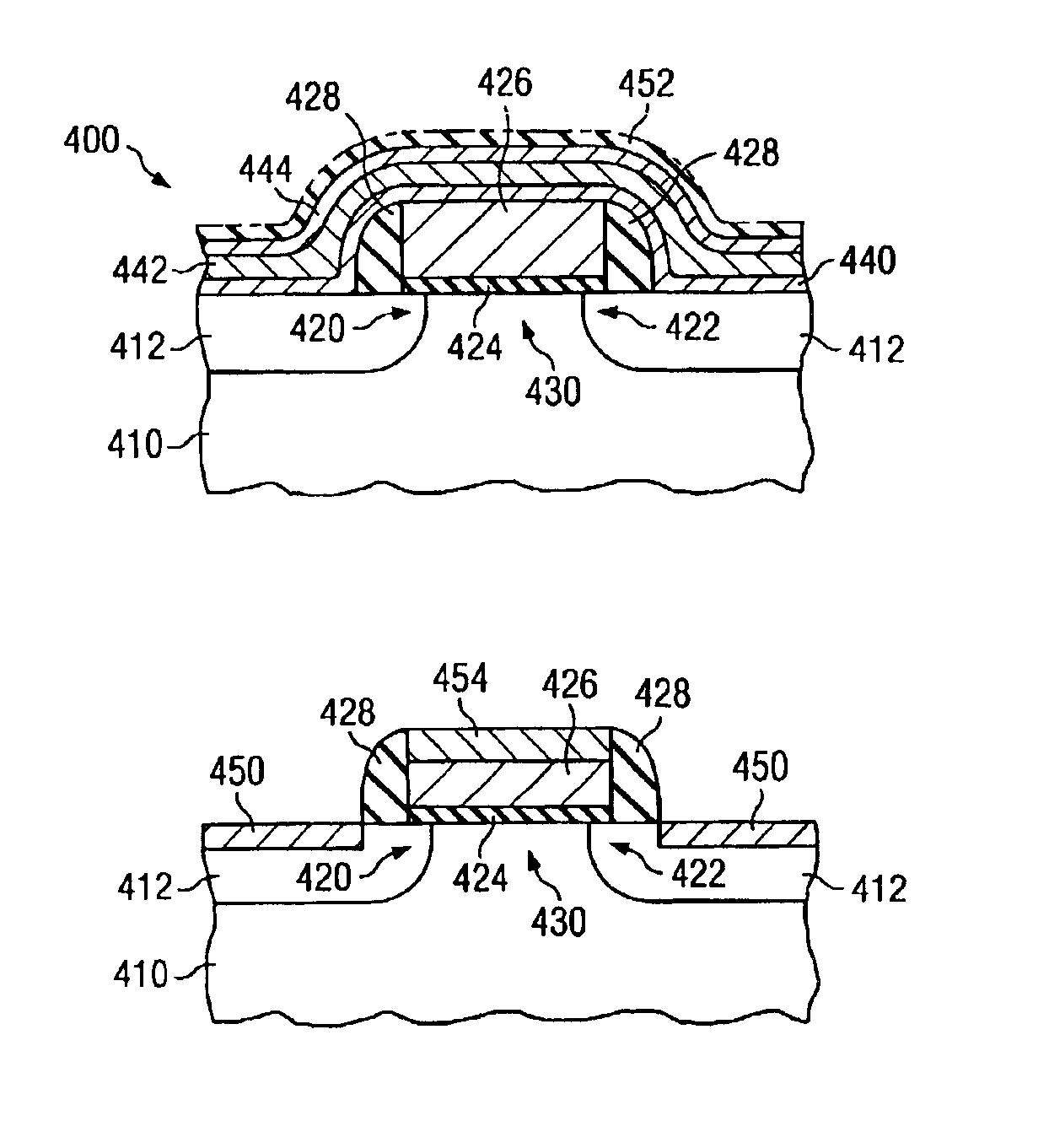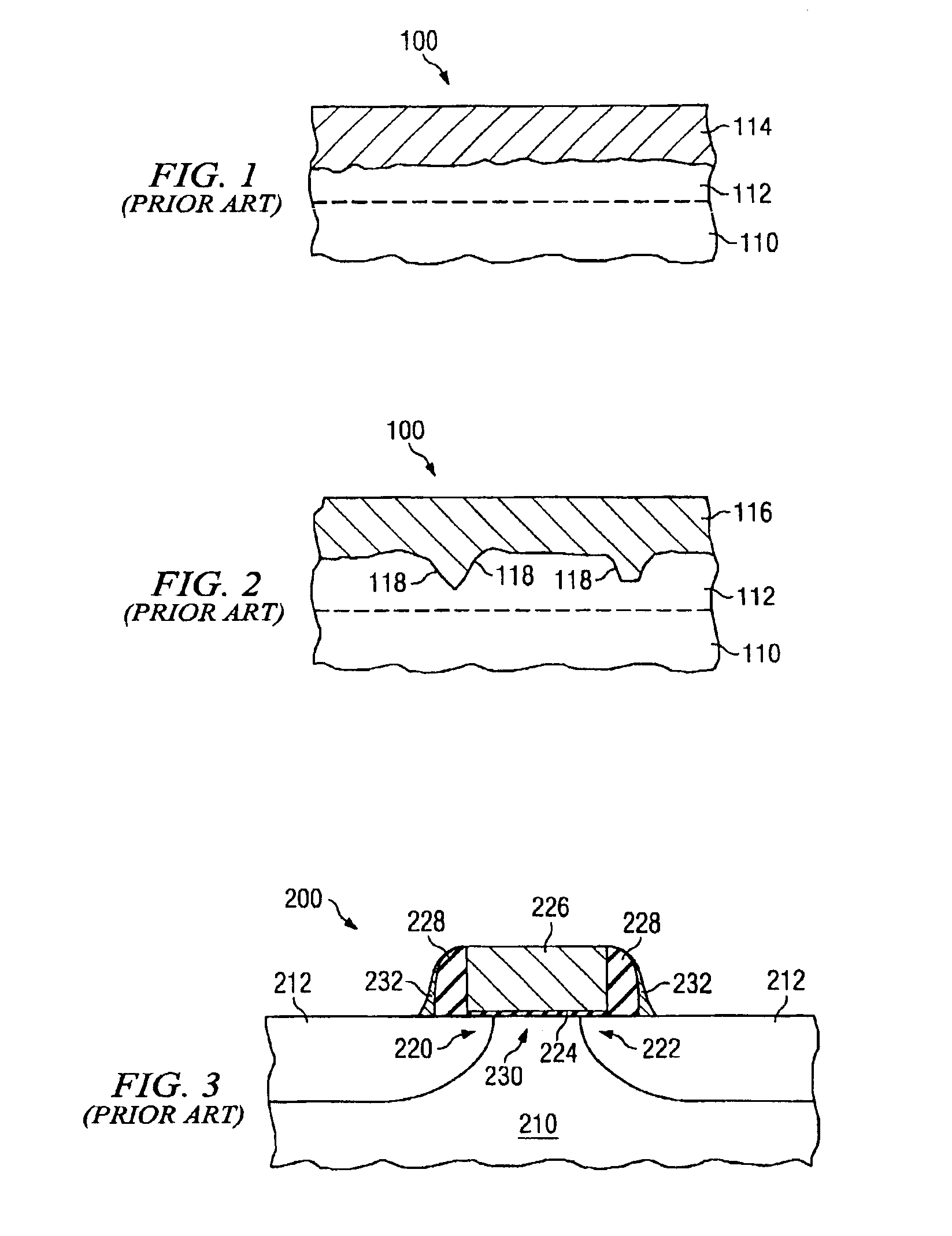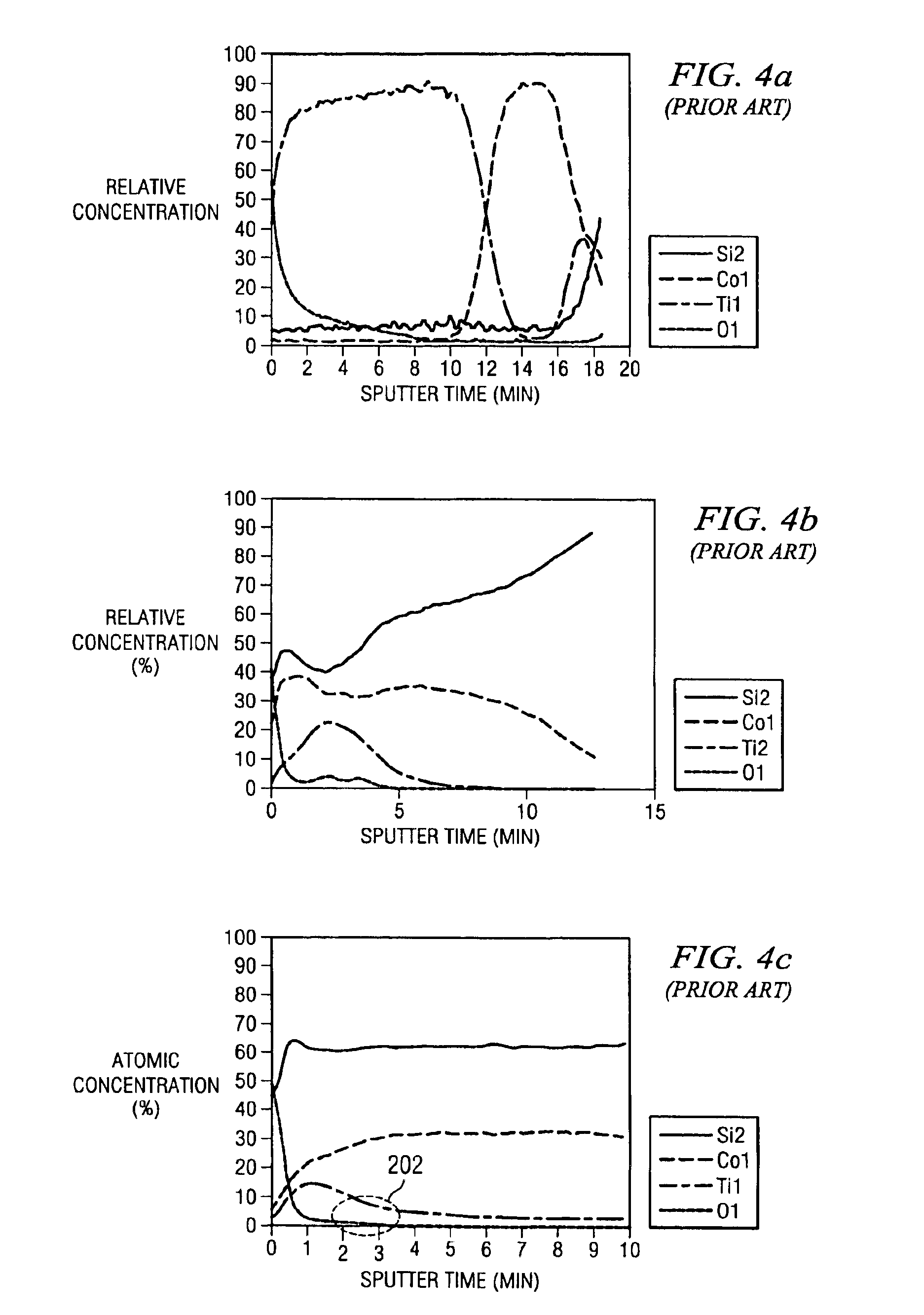Salicide formation method
a technology of salicide and formation method, which is applied in the direction of semiconductor devices, electrical equipment, transistors, etc., can solve the problems of reducing the surface oxide of the underlying semiconductor layer, reducing the salicide roughness, and reducing the sensitivity of the semiconductor surface, so as to prevent the formation of bridging, reduce junction leakage, and reduce the effect of sensitiveness
- Summary
- Abstract
- Description
- Claims
- Application Information
AI Technical Summary
Benefits of technology
Problems solved by technology
Method used
Image
Examples
Embodiment Construction
[0023]The making and using of the presently preferred embodiments are discussed in detail below. It should be appreciated, however, that the present invention provides many applicable inventive concepts that can be embodied in a wide variety of specific contexts. The specific embodiments discussed are merely illustrative of specific ways to make and use the invention, and do not limit the scope of the invention.
[0024]Problems with prior art cobalt silicide formation will be discussed, followed by a description of preferred embodiments of the present invention and some advantages thereof. The present invention will be described with respect to preferred embodiments in a specific context, namely a CMOS transistor. Embodiments of the invention may also be applied, however, to other semiconductor device applications where a silicide is desired to be formed.
[0025]Prior art methods of forming cobalt suicide will next be discussed. In FIG. 1, a semiconductor wafer or substrate 110 comprisi...
PUM
| Property | Measurement | Unit |
|---|---|---|
| temperature | aaaaa | aaaaa |
| temperature | aaaaa | aaaaa |
| thickness | aaaaa | aaaaa |
Abstract
Description
Claims
Application Information
 Login to View More
Login to View More - R&D
- Intellectual Property
- Life Sciences
- Materials
- Tech Scout
- Unparalleled Data Quality
- Higher Quality Content
- 60% Fewer Hallucinations
Browse by: Latest US Patents, China's latest patents, Technical Efficacy Thesaurus, Application Domain, Technology Topic, Popular Technical Reports.
© 2025 PatSnap. All rights reserved.Legal|Privacy policy|Modern Slavery Act Transparency Statement|Sitemap|About US| Contact US: help@patsnap.com



